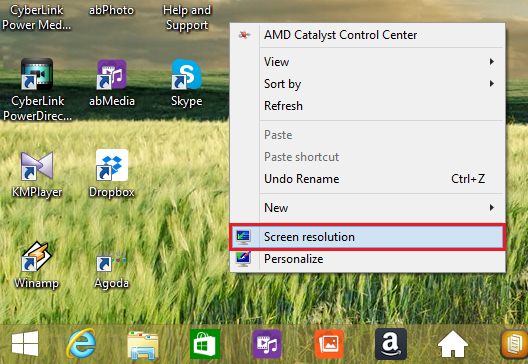The screen resolution is the product of the pixels between horizontal and vertical columns of a monitor. For example, a 1280 x 1024 screen resolution means that there are 1,280 pixels columns horizontally and there are 1,024 pixels columns vertically. The higher the screen resolution, the more detailed that images. LCD (Liquid Crystal Display) have their native screen resolution and it is recommended that the screen resolution is set to the LCD's native screen resolution for the best viewing. The native screen resolution means that the LCD was designed for a specific screen resolution even though it can operate with different screen resolution set by the computer. The native screen resolution is only applicable to LCD because of its technical properties but do not let native screen resolution and screen resolution confuse you. There may be times that you need to adjust the screen resolution lower to view images bigger if you have a poor eyesight.
Here are the steps to adjust the screen resolution on Windows 8.1.
1. Right-click on a free area of the desktop view and choose SCREEN RESOLUTION option.

2. Click on the drop down menu labeled "Resolution:" and choose the screen resolution desired. You can move the scroll bar up and down or use the mouse wheel to select.

3. Click anywhere in the Screen Resolution window to close the pull down menu and click the OK button.

Here are the steps to adjust the screen resolution on Windows 8.1.
1. Right-click on a free area of the desktop view and choose SCREEN RESOLUTION option.

2. Click on the drop down menu labeled "Resolution:" and choose the screen resolution desired. You can move the scroll bar up and down or use the mouse wheel to select.

3. Click anywhere in the Screen Resolution window to close the pull down menu and click the OK button.

No comments:
Post a Comment